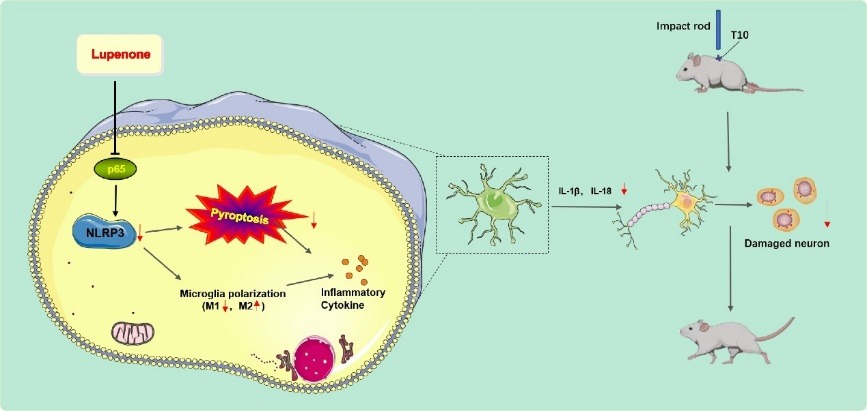中国神经再生研究(英文版) ›› 2024, Vol. 19 ›› Issue (8): 1802-1811.doi: 10.4103/1673-5374.389302
羽扇烯酮抑制炎症小体改善脊髓损伤引起的运动功能障碍
Lupenone improves motor dysfunction in spinal cord injury mice through inhibiting the inflammasome activation and pyroptosis in microglia via the nuclear factor kappa B pathway
Fudong Li1, 2, #, Xiaofei Sun2, #, Kaiqiang Sun3, #, Fanqi Kong2, *, Xin Jiang4, *, Qingjie Kong1, *
- 1Department of Orthopedics, Shanghai General Hospital, Shanghai Jiao Tong University School of Medicine, Shanghai, China; 2Department of Orthopedic Surgery, Spine Center, Shanghai Changzheng Hospital, Naval Medical University, Shanghai, China; 3Department of Orthopedic Surgery, Naval Medical Center, Naval Medical University, Shanghai, China; 4Department of Anesthesiology, Shanghai Changzheng Hospital, Naval Medical University, Shanghai, China
摘要:
脊髓损伤诱导的运动功能障碍与神经炎症有关。有研究发现,羽扇烯酮是一种广泛存在于多种植物的三萜类化合物,且在慢性炎症环境中存在显著的抗炎活性,但其是否也能对在脊髓损伤诱导的急性炎症产生作用尚未见报道。实验以重物打击法构建了小鼠脊髓损伤模型,而后腹腔注射羽扇烯酮(8 mg/kg,2次/d);并以脂多糖和ATP干预BV2细胞模拟脊髓损伤后的炎症反应。结果显示,羽扇烯酮可减轻IκBα和p65核转位,还可通过调节核因子κB抑制NLRP3炎症小体的产生,也能增强促炎性M1小胶质细胞向抗炎性M2小胶质细胞的转化。此外,羽扇烯酮可通过抑制核因子κB通路改善NLRP3炎症小体的过度激活和NLRP3诱导的小胶质细胞极化和焦亡。由此提出羽扇烯酮可通过抑制炎症小体对脊髓损伤发挥治疗作用。
https://orcid.org/0000-0002-3407-0715 (Fudong Li); https://orcid.org/0000-0002-3788-305X (Qingjie Kong)
